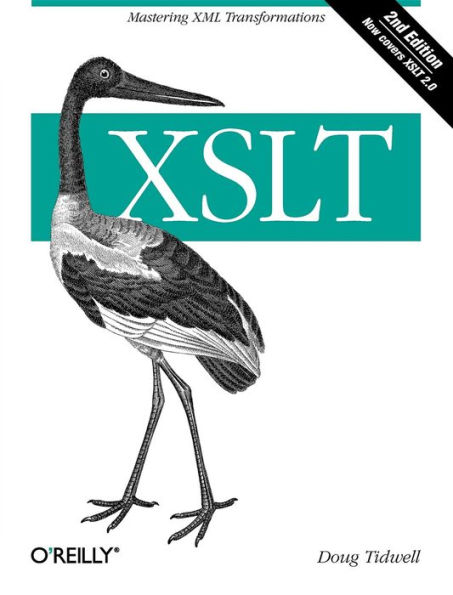

Paperback(Second Edition)
-
PICK UP IN STORECheck Availability at Nearby Stores
Available within 2 business hours
Related collections and offers
Overview
- Covers the XSLT basics, including simple stylesheets and methods for setting up transformation engines
- Walks you through the many parts of XSLT, particularly XSLT's template-based approach to transformations
- Applies both XSLT 1.0 and 2.0 solutions to the same problems, helping you decide which version of XSLT is more appropriate for your project
- Includes profuse examples that complement both the tutorial and the reference material
The new edition of XSLT has been updated thoroughly to explain XSLT 2.0's many dependencies, notably XML Schema and XPath 2.0. Want to find out how the 2.0 specification improves on the old? This book will explain.

Product Details
| ISBN-13: | 9780596527211 |
|---|---|
| Publisher: | O'Reilly Media, Incorporated |
| Publication date: | 07/03/2008 |
| Edition description: | Second Edition |
| Pages: | 986 |
| Sales rank: | 315,023 |
| Product dimensions: | 7.10(w) x 9.10(h) x 1.60(d) |
About the Author
Doug Tidwell is a senior programmer at IBM. He has more than a sixth of a century of programming experience, and has been working with markup languages for more than a decade. He was a speaker at the first XML conference in 1997, and has taught XML classes around the world. His job as a Cyber Evangelist is to look busy and to help people use new technologies to solve problems. Using a pair of zircon-encrusted tweezers, he holds a master's degree in computer science from Vanderbilt University and a bachelor's degree in English from the University of Georgia. He lives in Raleigh, North Carolina, with his wife, cooking teacher Sheri Castle (see her web site at http://www.sheri-inc.com) and their daughter Lily.



